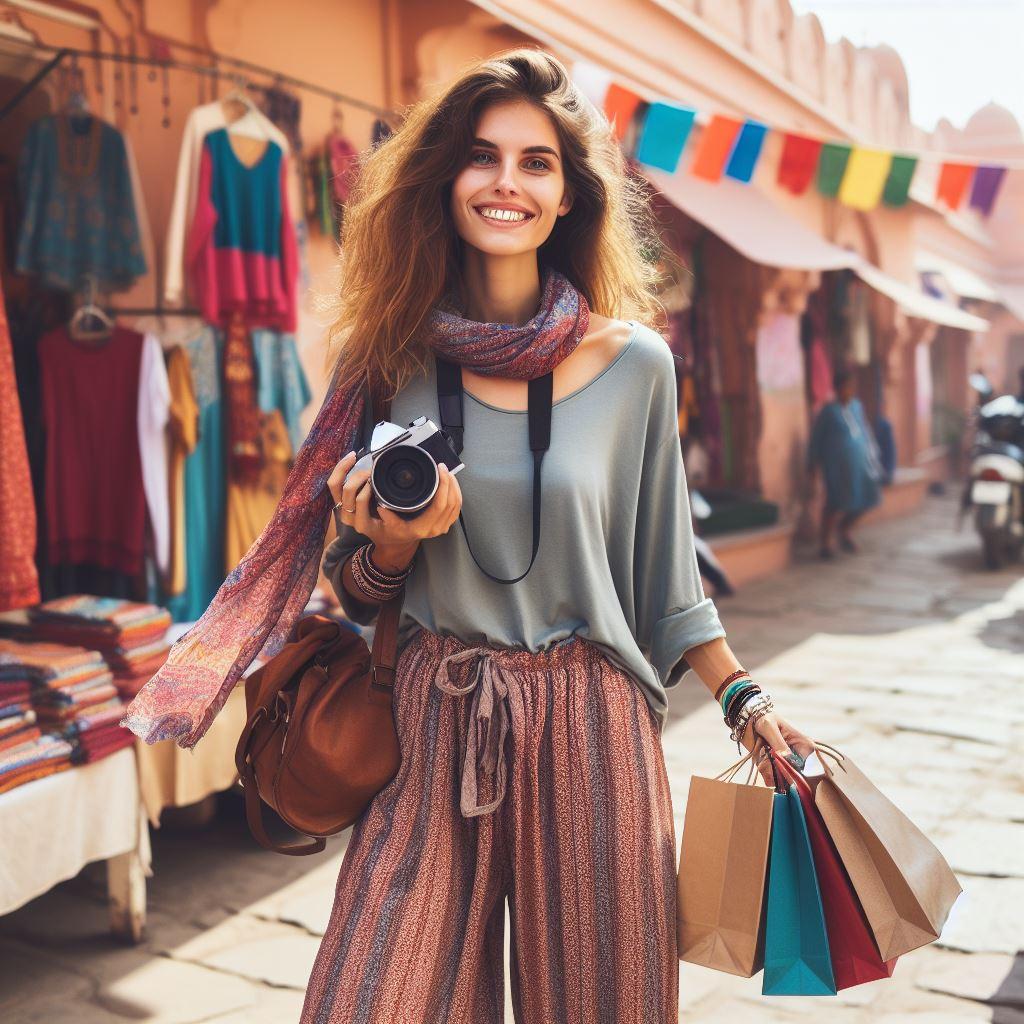India’s mix of conservative culture and tropical climate means dressing right can make or break your trip. You’ll face heat, humidity, and varying social norms, whether touring ancient temples, bustling markets, or vibrant festivals. Getting it wrong might lead to discomfort, unwanted stares, or even entry denial at sites. This guide covers key rules, exceptions, and outfit ideas for different scenarios to help you pack smart and travel confidently. We’ve added practical insights like where to shop locally and health tips to maximize your experience.
General Rules: Focus on Modesty and Comfort
Modesty shows respect in India, especially for women, and helps avoid harassment or sunburn in the intense heat. These tips apply across most of the country, from public transport to villages and markets.
- Thumb Rule: Cover up more, especially women. Stick to outfits that hide cleavage and go below the knee.
- Avoid shorts, miniskirts, or tank tops in everyday settings—they can draw negative attention.
- For beaches, skip bikinis or revealing swimsuits unless at upscale resorts or specific spots in Goa and Kerala. Use a cover-up like a sarong when leaving the water.
- Choose loose-fitting clothes in breathable fabrics like cotton or linen to stay cool and dry.
- Pick comfortable, easy-to-remove footwear—many places require shoe removal.
- Insight: Light colors reflect heat better, but avoid all-white outfits as white is often worn for mourning in Hindu traditions.
- Added tip for men: Follow similar rules—long pants and shirts in conservative areas to blend in.
- Health note: In mosquito-prone areas like during monsoon (June-September), opt for long sleeves and pants in the evenings to reduce bite risks.
Following these reduces cultural friction and lets you focus on enjoying India’s diversity. Plus, modest dressing often leads to warmer interactions with locals.
Exceptions: Where You Can Dress More Casually
Not everywhere is strict. In tourist-heavy or modern spots, you can relax the rules without issues. Shorts, skirts, dresses, and tank tops are fine if not too revealing.
- 5-star hotels and resorts: Feel free to wear casual resort wear.
- Nightclubs, pubs, resto-bars, and upscale neighborhoods in cities like Mumbai, Delhi, or Bangalore: Modern outfits work here.
- Select beaches and tourist areas in Goa, Kerala, and Pondicherry: Swimsuits or bikinis are common, but cover up off the sand.
- Northern regions in winter (November-February): Layer up with warmer clothes like jackets and scarves—temperatures can drop below 10°C (50°F) in places like the Himalayas.
- Added insight: In cosmopolitan areas like South Mumbai or Gurgaon, Western fashion is the norm, but always gauge the crowd.
- Monsoon tip: Pack quick-dry items and a lightweight rain jacket—rains can be heavy and sudden.
Outfit Suggestions for Common Activities
Tailor your clothes to what you’re doing. Here’s breakdown by occasion, with specifics to help you pack efficiently.
Visiting Temples, Mosques, Churches, or Religious Sites
Religious places enforce strict dress codes—entry can be denied if you’re not covered.
- Cover shoulders, chest, and knees for respect.
- Skip leather items, as they’re seen as impure in many Hindu and Jain sites.
- Remove shoes before entering; bring socks to keep feet clean on hot or dirty floors.
- Women: Carry a scarf or dupatta to cover your head—it’s required in many mosques and some temples.
- Added tip: Men should avoid hats inside, but a scarf works for sun protection outside.
- Insight: Some sites like the Golden Temple provide free cover-ups if needed, but it’s better to come prepared to save time.
Exploring Markets, Streets, or Villages
These areas are dusty and crowded, so prioritize protection and security.
- Go for light, loose clothing that covers most of your body to shield from sun, dust, and stares.
- Avoid bright or flashy colors—they can make you stand out more.
- Wear closed-toe shoes to protect against dirt, insects, or uneven paths.
- Use a backpack or cross-body bag for hands-free carrying of essentials like water and maps.
- Added insight: In rural villages, blending in with salwar kameez or kurtas can lead to more authentic experiences and photo ops with locals.
- Packing tip: Bring a reusable cloth bag for shopping—plastic bans are common in many states.
Hiking, Trekking, or Camping
India’s trails, from Himalayan treks to Western Ghats hikes, demand functional gear for variable weather.
- Layer clothes: Base layers, fleeces, and windproof jackets to handle temperature swings.
- Choose breathable, quick-drying fabrics for sweat and rain.
- Invest in sturdy, waterproof hiking shoes to tackle rough terrain and avoid blisters.
- Essentials: Hat, sunglasses, sunscreen (SPF 50+), insect repellent, and a reusable water bottle.
- Added tip: For high-altitude areas like Ladakh, include thermal underwear—nights get cold even in summer.
- Health note: Altitude sickness is real; pack light to ease the load, and consider UV-protective clothing.
Attending Weddings, Festivals, or Cultural Events
These are highlights—dressing up shows appreciation and makes you part of the fun.
- Try traditional outfits: Sarees, salwar kameez, or lehengas for women; kurtas or sherwanis for men.
- Accessorize modestly with jewelry, bindis, bangles, or flowers—keep it tasteful.
- Western options: Modest, elegant dresses or suits work too.
- Warning: Avoid shirts with religious symbols or controversial slogans—they can offend.
- Added insight: Colors matter—red for weddings, but avoid black or white at auspicious events.
- Shopping tip: Buy affordable ethnic wear at markets like Delhi’s Chandni Chowk or Mumbai’s Colaba—great souvenirs, and tailors can customize quickly.
Final Thoughts: Dress Smart for a Better Trip
Dressing right in India boosts your comfort, safety, and cultural immersion. It opens doors to genuine connections and memorable moments. Consider buying local clothes upon arrival—they’re cheap, authentic, and adapted to the climate. Places like FabIndia or street markets offer quality options. Pack versatile items like scarves for multiple uses. With these tips, you’ll navigate India’s vibrant scenes with ease and respect. Safe travels!
Categories :


